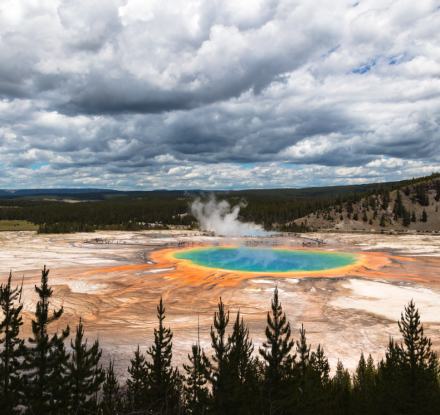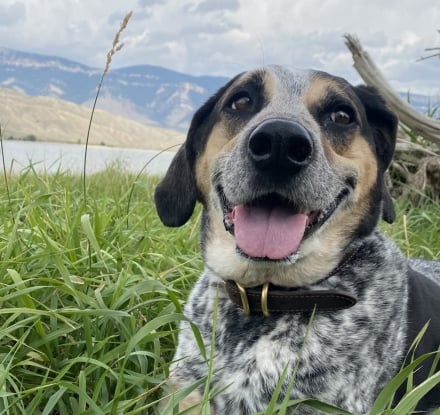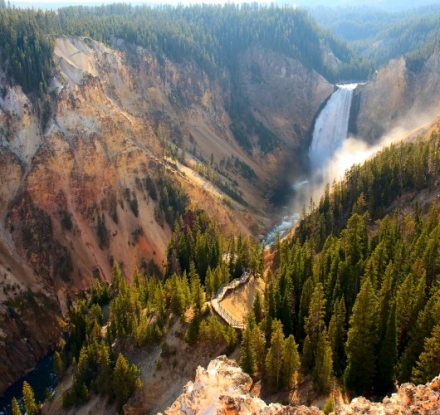
Yoga the Bear
Travelers from Cody lined up at the East Entrance to Yellowstone National Park – one of two park entrances accessible from town – on the day it opened for the summer season, ready to experience the world’s first national park in all of its springtime splendor and hoping for a glimpse of the park’s wildlife.
According to an account by Cody Enterprise reporter Lew Freedman, some of those early-season visitors were in luck. Just a few miles into the park, visitors spotted a grizzly lazily stretching and rolling around in the grass and stretching one paw and then the other skyward as if exercising. A quick-witted ranger dubbed the grizzly “Yoga the Bear.”
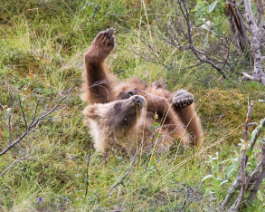
Bears are often seen stretching and playing in the sunshine. National Park Service photos.
I guess if you spent several months in a deep slumber, you might want to stretch out those limbs too. I’ve always thought grizzlies are one of the most compelling of all wildlife species in the park. They can be ferocious, sure, but they are predators and that’s what they do. The sows are fiercely protective of family members – at least for a year or two – and they have a playful side that is a joy to watch, from a safe distance of course.
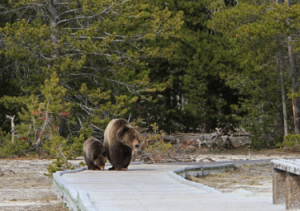
Nearly 700 bears make their home in Greater Yellowstone.
Before heading to the park in hopes of seeing a bear strike a Downward Facing Dog pose, read up on the species on the National Park Service website. NPS tells visitors to keep a safe distance of at least 100 yards from all bears, unless viewing from the closed window of a car as a bear passes by. And of course, never feed a bear. It’s dangerous, and you could endanger the life of a bear by acclimating it to human food. The website also offers a variety fun facts. Here are a few.
- Although grizzlies can vary in color from fair to very dark, most grizzlies in Yellowstone and the
surrounding region are light brown. - Grizzlies eat what’s available each season, including plants, mammals, fish, fungi and invertebrates.
In fact, eating is their most important activity, particularly in the fall when they are fattening up on
whitebark pine nuts for winter. - Bears also spend a lot of time in their winter dens, as much as five months for most bears. Pregnant
females spend an even longer time in their winter homes. - Most bears leave their dens as soon as temperatures are warm enough for them to forage for early
spring vegetation and winter kill mammals like elk. - There are about 690 grizzlies in the Greater Yellowstone Ecosystem. They can best be viewed from
the East Entrance and along the road to Yellowstone Lake as well as Hayden and Lamar Valleys. - Bears stand on their back legs to see farther. Their eyesight is roughly the same as a human.
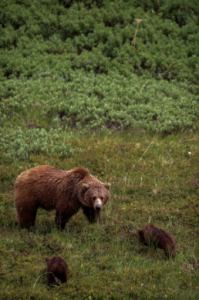
Bear cubs are playful, and some lucky visitors have spotted them rolling around, and chasing and swatting each other, much like human siblings. And, just like human kids, sometimes they get scolded by their mothers.
Springtime is one of the best seasons of the year to see these fascinating creatures as well as many of the other mammals who roam through Yellowstone Country. I’ll be packing my binoculars and heading there this weekend in hopes of spotting Yoga the Bear.
Until next time, I’m loving life – and striking a Shavasana pose – here in Cody Yellowstone.


